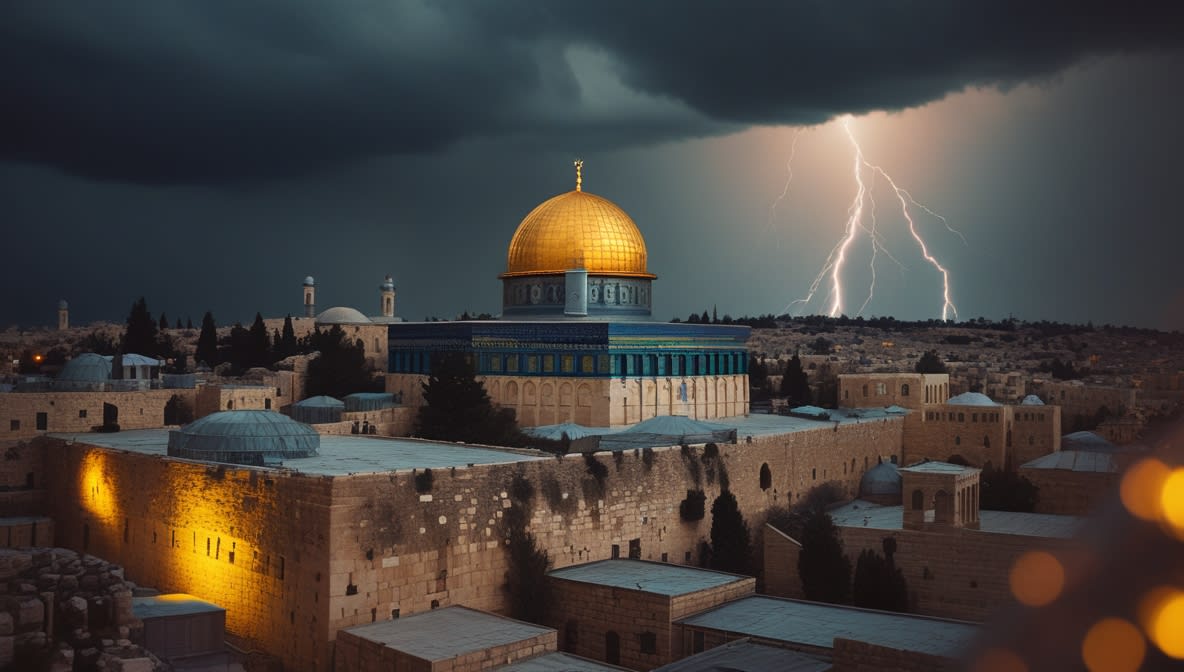The world has always looked toward Jerusalem with a strange mix of fascination and fear. It is a city older than empires, claimed by prophets, and fought over by kings. Today, it remains as contested as ever, and for millions of people across faiths, it represents not just history, but destiny. As 2025 unfolds, more voices—religious, political, and even scientific—are pointing toward this year as a prophetic turning point.
But why now? And why does every road, whether of faith or politics, seem to circle back to Jerusalem?
A City Written Into Prophecy
For centuries, Jerusalem has been described in religious texts as the “center of the nations.” In the Bible, it is where God’s presence dwelled, the site of Solomon’s Temple, and the location tied to Christ’s return. In Islamic tradition, it is Al-Quds, the place from which the Prophet Muhammad is said to have ascended into heaven. In Jewish belief, it is the eternal capital, promised by covenant.
Prophecy has always hovered over the city like a storm cloud. From the Book of Zechariah’s warnings of nations gathering against Jerusalem, to Islamic hadiths about end-times conflict in the region, to Christian expectations of Armageddon, the city has never escaped apocalyptic associations.
Yet, what makes 2025 different is not just scripture—it’s reality.
2025: The Geopolitical Convergence
The last few years have accelerated tensions in ways that eerily mirror prophetic expectations.
Diplomatic Earthquake at the UN – In September, more than 140 nations recognized Palestine in a landmark vote. For some, it was a long-overdue step toward justice. For others, it was the exact kind of global alignment against Israel that prophecy has long warned about.
Shifting Power in the Middle East – Oil, once the region’s greatest strength, is facing decline. Economists suggest Middle Eastern nations will soon face a financial crisis that could trigger instability. Prophecy watchers note how scripture often ties economic upheaval to the rise of new global powers.
Jerusalem’s Fragile Balance – Inside the city itself, sacred spaces remain flashpoints. The Temple Mount/Al-Aqsa compound has seen surges of unrest, reminding the world how easily one spark could ignite a broader conflict.
The Faith Factor
What sets 2025 apart is not only political turbulence but how faith communities interpret it.
Christians see the recognition of Palestine and rising global division over Israel as signs of “nations gathering against Jerusalem.” Many link it to prophecies in Ezekiel and Revelation.
Muslims point to the centrality of Al-Quds in Islamic eschatology, where the city plays a role in end-times events.
Jews are watching growing calls for a Third Temple, something that would redefine both politics and prophecy.
It is rare to find a moment when all three Abrahamic faiths feel an almost simultaneous stirring of expectation.
Prophecy Meets Technology
Interestingly, 2025 is also the year technology has magnified prophecy’s reach. Social media platforms, Bible apps, and AI-driven interpretations have put end-times discussions in everyone’s pocket. A video of unrest in Jerusalem can go viral in minutes, accompanied by thousands of comments quoting scripture.
Prophecy, once confined to pulpits and study halls, is now trending on TikTok and Twitter. The digital age has made faith global, and Jerusalem is the keyword everyone seems to search for.
Is It Fear or Faith?
Not everyone sees these “clouds” as doom. Some argue that prophecy is less about predicting destruction and more about pointing humanity back toward hope. For believers, prophecy is not just a warning—it is a promise that history is not random.
Skeptics, of course, caution that seeing prophecy in every headline is dangerous. Geopolitics, they argue, drives conflict in Jerusalem, not divine timelines. But even skeptics admit: the timing of events in 2025 feels uncanny.
A Global Stage for a Small City
Jerusalem is not the largest city in the world. It doesn’t have the wealth of New York, the technology of Tokyo, or the armies of Washington. Yet, when it trembles, the world listens.
2025 reminds us that prophecy is not only about the future—it’s about the present. Whether one believes in scripture, geopolitics, or both, Jerusalem has a way of pulling human attention back to itself, again and again.
Perhaps that is the real prophecy: that in every age of uncertainty, humanity will look toward the ancient stones of Jerusalem, searching for meaning.
Conclusion
The clouds over Jerusalem in 2025 are not just weather—they are warnings, symbols, and perhaps even signs. The city remains both fragile and eternal, both divided and holy. As the world debates, prays, and argues, one truth stands: Jerusalem refuses to be forgotten.
Whether prophecy is unfolding before our eyes or not, the eyes of the world are fixed on this ancient city more than ever before.
And maybe, just maybe, that is where the future begins.
